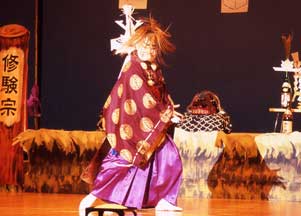
| Classification | Kagura |
|---|---|
| name | Waga Daikori Kagura (Waga Daijo Kagura) |
| alias | Great-grand-grand-Maizen Kagura |
| Designated date | February 15, 1974 |
| Holding group | Great-grand-day-old riding party |
| location | Wakamachi Kitakami City |
| home page | Kitakami |
Overview
It is a kind of Yamabushi Hijiri Kagura, and it has a deep prayer of learning. It is said that the Kokutoin yen Kotobuki, which opened the base of Ryutosanmajyo-ji, started about 600 years ago, and it is also called Kidokunin Hokujakuraku. It is said that the current Kagura is revived from the late Bakumatsu to the beginning of the Meiji period, when Sato Yujiro received instructions from Hakotsun, the Hachiman Shrine in Nankan, Hanamaki-shi, where his father is Takeo. . The main performances are "dance" and "Kyogen", and the dance includes "Seven pot", "Nardial calm", "Ryuden", "Aragami", "Gongen Mai", and other 33 categories. "Threesomes" and many more. It is a song based on Yamabushi Shuin. It is a sacred-bundish chaos based on the theory of the main land, and it is a highly traditional kagura. It is mysterious that other Yamabushi Kagura can not be found, leaving a strong spirit of Shugendo spell in the act of masters, footsteps, nine characters (Sinhwa, Sinkoi, 9 ways of tying up when doing holding prayers). It is Kagura that makes you feel the atmosphere. It begins to dance on New Year Day 1 and dances at the former village company Saiko Grand Furudate Shrine in the fall festival on September 19.
Main performance place
Awaji Grand Furudate Shrine Regular Festival (September)
